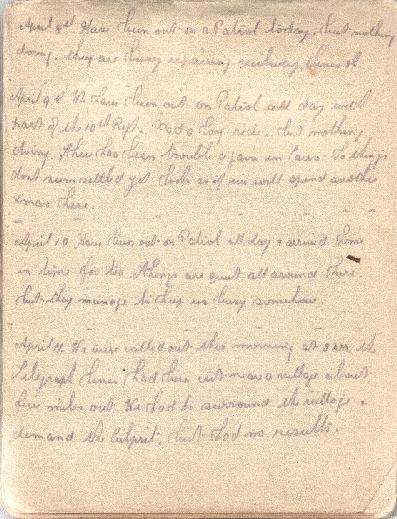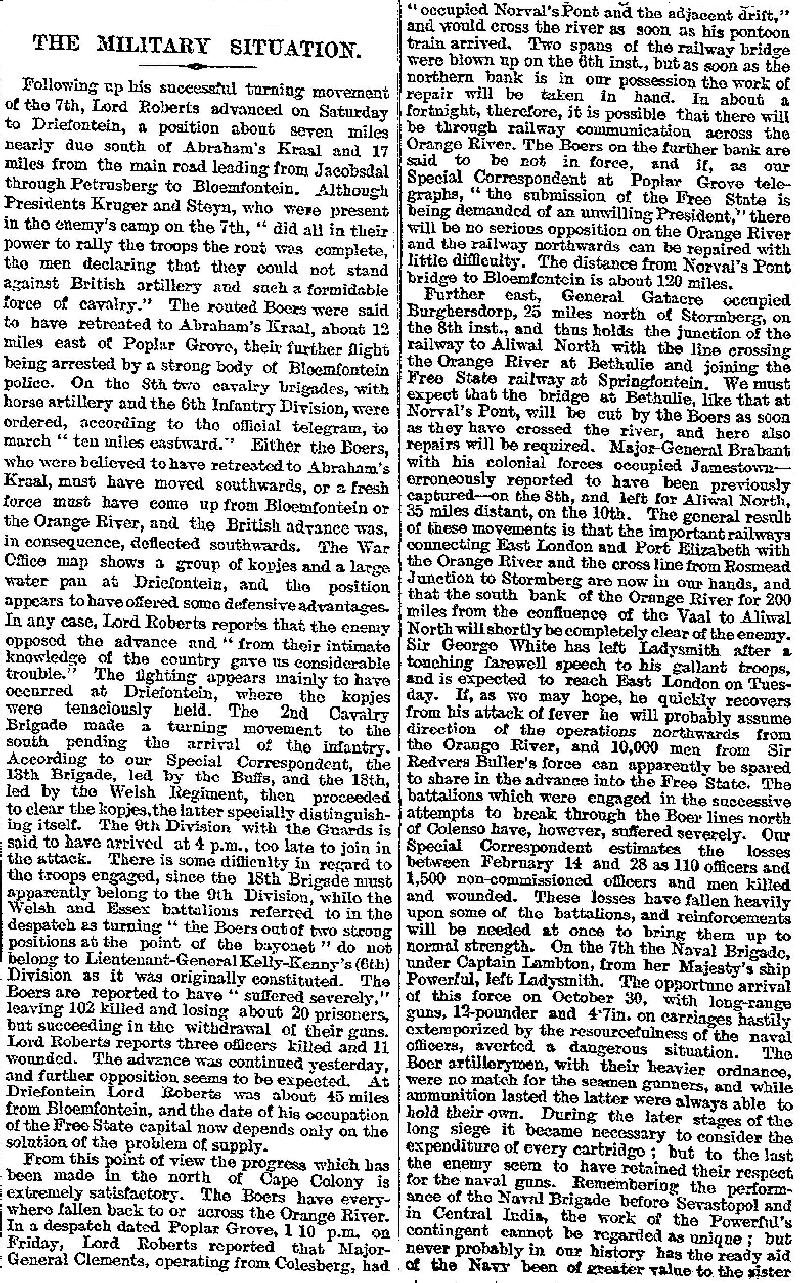Topic: Diary - Schramm
Diaries of AIF Servicemen
Bert Schramm
During part of the course of his military service with the AIF, 2823 Private Herbert Leslie Schramm, a farmer from White's River, near Tumby Bay on the Eyre Peninsular, kept a diary of his life. Bert was not a man of letters so this diary was produced with great effort on his behalf. Bert made a promise to his sweetheart, Lucy Solley, that he would do so after he received the blank pocket notebook wherein these entries are found. As a Brigade Scout since September 1918, he took a lead part in the September 1918 breakout by the Allied forces in Palestine. Bert's diary entries are placed alongside those of the 9th Light Horse Regiment to which he belonged and to the 3rd Light Horse Brigade to which the 9th LHR was attached. On this basis we can follow Bert in the context of his formation.
Bert Schramm's Diary, 8 April 1919
Bert Schramm's Handwritten Diary, 8 - 11 April 1919
[Click on page for a larger print version.]
Diaries
Bert Schramm
Bert Schramm's Location - Zagazig, Egypt.
Bert Schramm's Diary - Have been out on a patrol today but nothing doing. They are busy repairing railway lines etc.
9th Light Horse Regiment War Diary
9th Light Horse Regiment Location - Zagazig, Egypt.
9th Light Horse Regiment War Diary - Bleechmore, Major C, with two mounted troops returned from reconnaissance of Isnika and Ku Abaza reporting all quiet and inhabitants inclined to be friendlier than before.
Darley
Darley, TH, With the Ninth Light Horse in the Great War, Adelaide, Hassell Press, 1924.
No Entry
Previous: Bert Schramm's Diary, 7 April 1919
Next: Bert Schramm's Diary, 9 April 1919
Further Reading:
9th Light Horse Regiment AIF War Diary - Complete day by day list
Bert Schramm Diary - Complete day by day list
Additional Reading:
Darley, TH, With the Ninth Light Horse in the Great War, Adelaide, Hassell Press, 1924.
Citation: Bert Schramm's Diary, 8 April 1919








